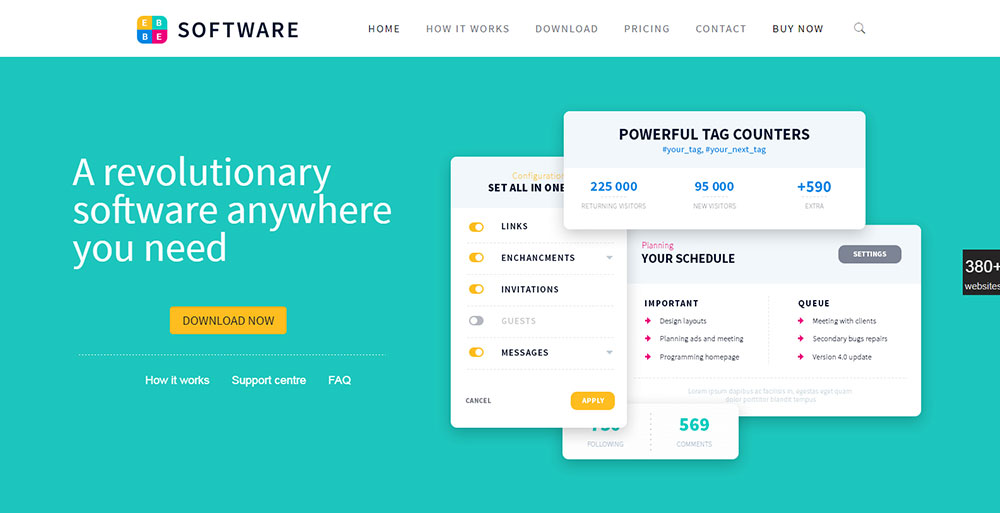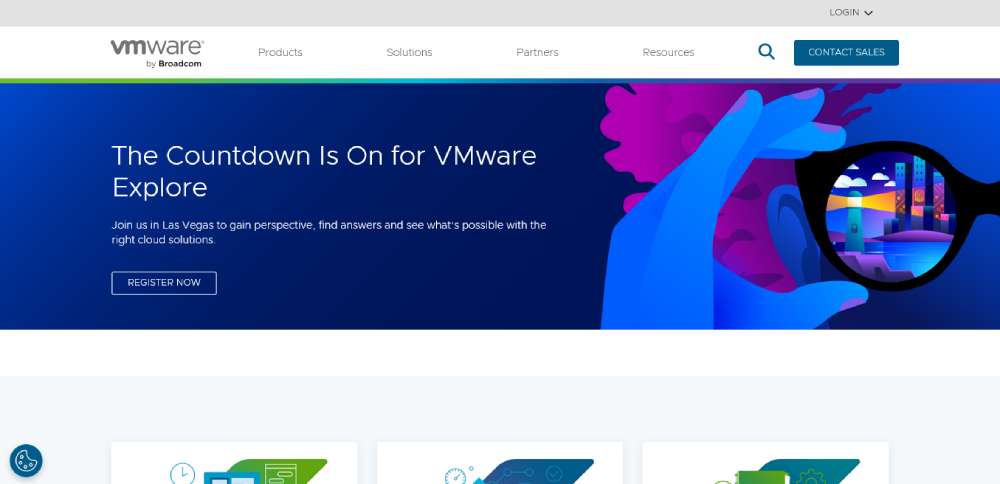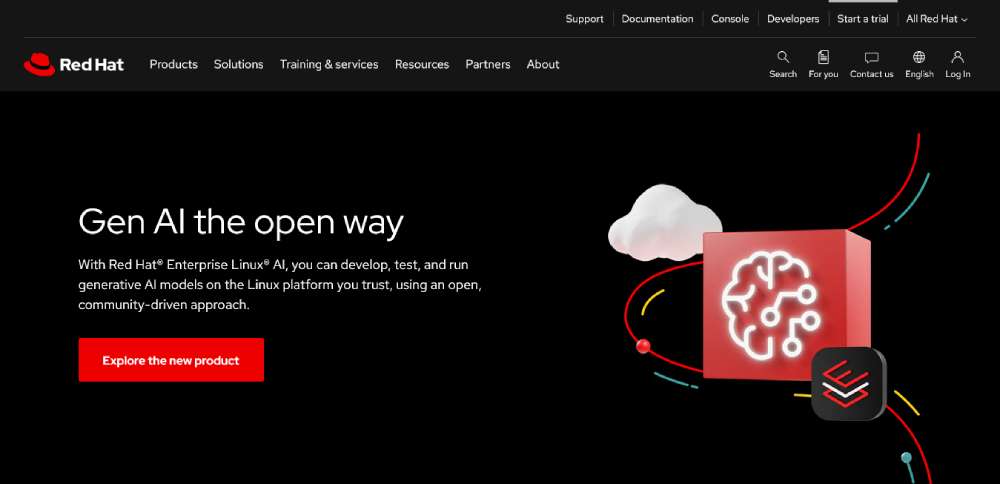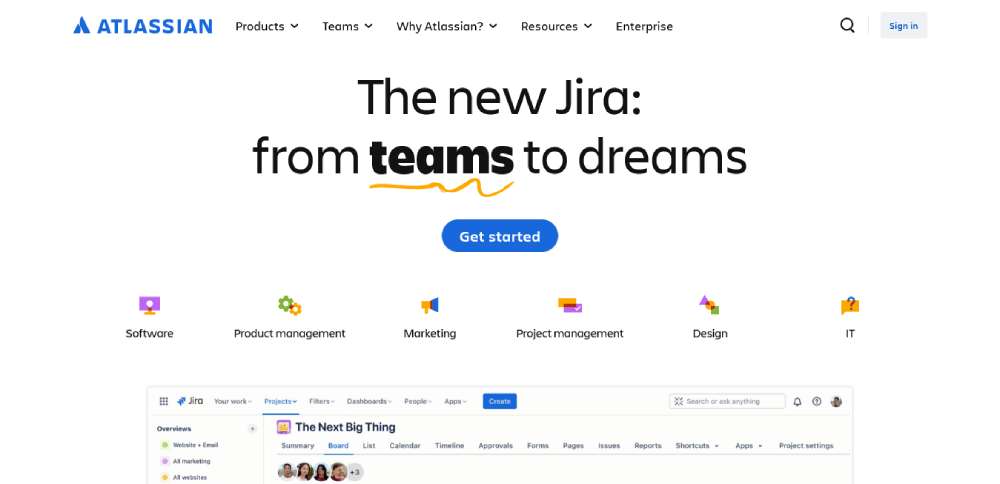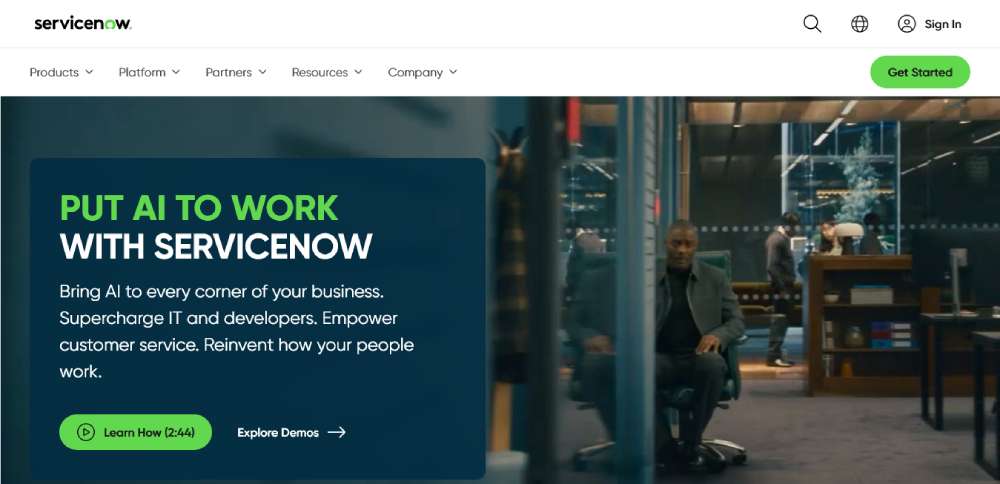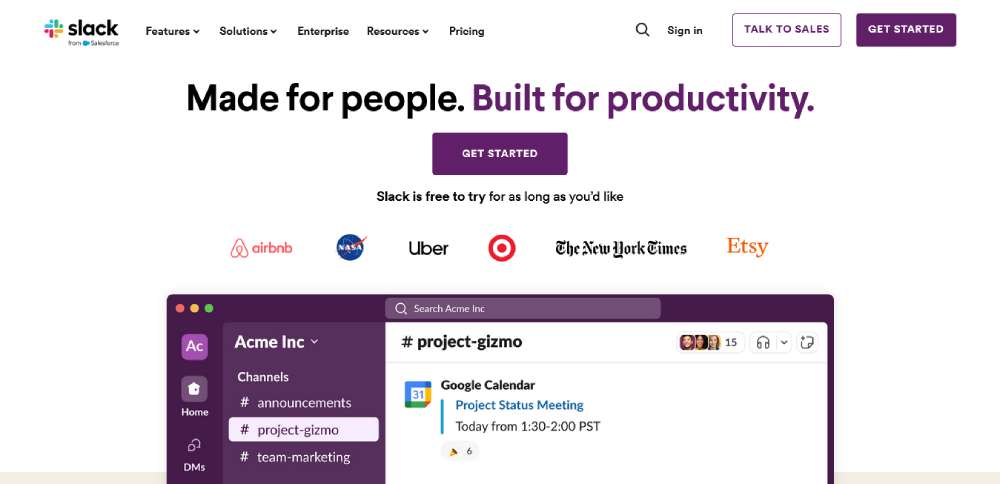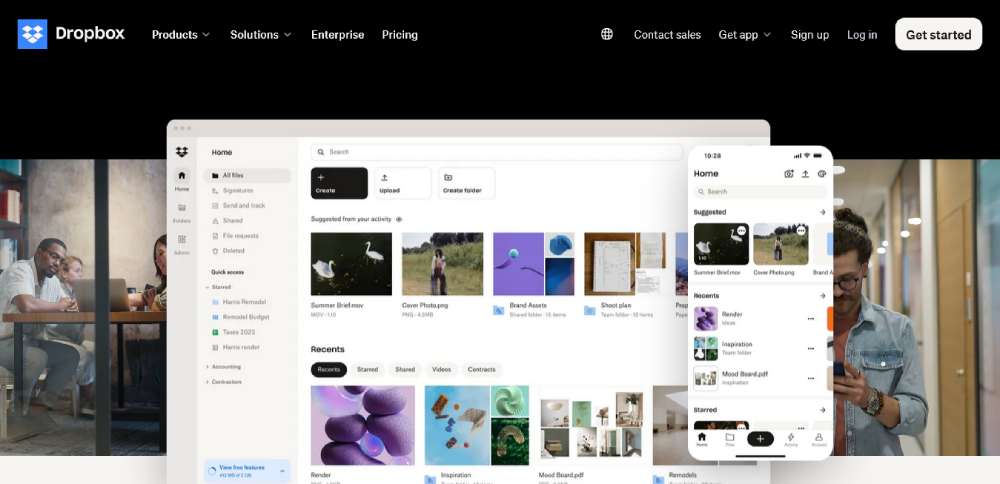
Top Entertainment Website Design Examples
September 3, 2024
Top IT Company Website Design Examples
September 17, 2024In the vast landscape of digital design, software website design examples stand as beacons of creativity and functionality. Every scroll and click should feel like a seamless journey—a testament to the user interface design that captivates and informs.
Have you ever opened a site, and immediately, the interface felt... just right? That magic happens when you marry UX/UI software with innovation.
This article delves into the heart of web design excellence, where HTML5 design, responsive techniques, and the latest graphic design trends come together to not only dazzle the eye but build bridges between businesses and their audiences.
With examples from platforms like Adobe XD and Figma—tools trusted by professionals—your next project could redefine your digital narrative.
By the end, you'll be inspired, armed with practical insights to enhance your own projects. Whether you’re keen on prototyping platforms or curious about SEO best practices, we’ve got you covered. Ready to elevate your design game? Let’s dive in.
Software Website Design Examples
Microsoft
Microsoft empowers users through a vast range of products, from cloud services to gaming. Their ecosystem spans Windows, Office, and Azure, enhancing both personal and professional lives. Whether it's a student with a Surface or a global enterprise utilizing Azure's AI, Microsoft shapes technology into accessible solutions.
Apple
Apple creates seamless, intuitive experiences across its iconic devices like iPhone, iPad, and Mac. Innovation lies at the heart of their ecosystem, which blends hardware, software, and services like Apple Music and iCloud, fostering a harmonious digital environment that delights users worldwide.
IBM
IBM leads in AI, hybrid cloud, and quantum computing, driving businesses toward the future. With over a century of innovation, IBM delivers cutting-edge solutions that optimize operations, secure data, and unleash the potential of artificial intelligence, all backed by unparalleled research and development.
BeSoftware
Oracle
Oracle stands at the forefront of cloud technology, providing comprehensive solutions that integrate AI, data management, and enterprise applications. Their cloud infrastructure enables businesses to innovate with speed, scale efficiently, and gain a competitive edge in a rapidly evolving digital landscape.
SAP
SAP offers enterprise software that transforms businesses through advanced analytics, ERP, and cloud solutions. With a focus on sustainability and efficiency, SAP empowers organizations to run better by integrating all aspects of operations, from financials to human resources, into one coherent system.
Adobe
Adobe redefines creativity with its suite of design tools, including Photoshop, Illustrator, and Premiere Pro. Their software is essential for creatives, offering powerful features that inspire innovation across digital media, while their cloud-based platforms foster collaboration and accessibility.
Salesforce
Salesforce revolutionizes how businesses connect with their customers through its AI-powered CRM. By uniting sales, marketing, and service on a single platform, Salesforce helps companies build deeper relationships, automate processes, and drive growth. From small businesses to global enterprises, Salesforce's cloud solutions are at the heart of digital transformation.
Amazon Web Services (AWS)
AWS dominates the cloud computing landscape with a vast array of services, including computing power, storage, and databases. AWS enables organizations to innovate faster with scalable, flexible, and cost-effective solutions. From startups to large enterprises, AWS's infrastructure supports diverse applications, from AI to machine learning and big data analytics.
BeApp7
Cisco
Cisco is a global leader in networking, cybersecurity, and IT infrastructure. Their technologies connect and protect data across the globe, enabling businesses to operate securely and efficiently. With solutions ranging from enterprise networks to AI-driven security, Cisco powers the digital world, driving innovation in industries from healthcare to finance.
VMware
VMware leads the charge in cloud infrastructure and digital transformation. Known for their expertise in virtualization, VMware offers solutions that empower businesses to manage complex cloud environments with ease. Their platforms integrate apps, security, and networking, providing a robust foundation for enterprise IT operations.
Intel
Intel is at the forefront of innovation in computing, powering everything from data centers to personal devices. With a focus on AI, edge computing, and high-performance processors, Intel drives advancements that shape the digital world. Their technologies enable smarter, faster, and more connected experiences across the globe.
Red Hat
Red Hat is the world’s leading provider of open-source solutions, transforming enterprises through reliable, high-performing technologies. Their platforms, including Red Hat Enterprise Linux, support cloud-native development and automation, making them a trusted partner for businesses aiming to innovate with open-source software.
Atlassian
Atlassian empowers teams to collaborate and achieve their best work with tools like Jira, Confluence, and Trello. These platforms streamline project management, software development, and service management, fostering an environment where teams of all sizes can plan, track, and deliver projects efficiently, from startups to large enterprises.
BeApp
ServiceNow
ServiceNow drives digital transformation with its robust workflow automation platform, enabling businesses to streamline operations across IT, HR, customer service, and more. Their cloud-based solutions help organizations enhance efficiency, reduce costs, and deliver superior experiences, empowering teams to work smarter and faster.
Intuit
Intuit empowers individuals and businesses to achieve financial confidence through products like TurboTax, QuickBooks, and Mailchimp. Their platform leverages AI and data to simplify financial tasks, from managing taxes to growing small businesses, ensuring users can focus on what truly matters: their prosperity.
Workday
Workday unifies finance, HR, and planning into a single platform, integrating AI and continuous innovation at its core. This enterprise management cloud helps businesses make confident decisions, streamline operations, and empower their workforce, driving sustainable growth and operational excellence.
Autodesk
Autodesk revolutionizes design and make industries with its powerful software tools like AutoCAD, Revit, and Fusion 360. Catering to professionals in architecture, engineering, and entertainment, Autodesk’s solutions enable the creation of everything from skyscrapers to blockbuster movies, fostering innovation across the globe.
Slack
Slack transforms communication within organizations by centralizing collaboration in one platform. With channels for teams, projects, and topics, Slack enhances productivity and keeps everyone aligned. From messaging to file sharing, it’s where work happens in a faster, more organized, and secure way.
Zoom
Zoom connects people across the world with its reliable video conferencing and collaboration tools. Beyond meetings, Zoom offers chat, phone, webinars, and virtual events, making it the platform of choice for businesses aiming to maintain seamless communication and enhance remote collaboration.
Dropbox
Dropbox simplifies file storage, sharing, and collaboration with its cloud-based platform. Known for its user-friendly interface, Dropbox ensures that your documents are accessible and secure from anywhere. It’s a go-to solution for teams looking to streamline workflows and keep everything organized in one place.
FAQ On Software Website Design
What are some essential elements in a great software website design?
A great software website captivates with its user interface design, seamlessly guiding users from one section to another. Interactive design elements, such as animations or transitions, maintain engagement.
Strong typography paired with a cohesive color scheme design underlines content clarity, while responsive designs ensure content accessibility on any device.
How do I choose the right web development tools?
Selecting the right tools often boils down to your goals. Figma and Sketch offer robust options for wireframing and prototyping. If you're keen on HTML5 design, explore Bootstrap for templates.
For content management, WordPress enables customization without overwhelming complexity. It’s all about the synergy between need and usability.
Can you give examples of responsive design techniques?
Responsive design adapts web pages to the user's device. Techniques include flexible grids and layouts using CSS, fluid images, and media queries that fine-tune style for different screen sizes.
Combining such techniques ensures your site offers a consistent experience, no matter if accessed via Google Chrome or Safari.
What resources offer design inspiration?
Good design draws wisdom from varied sources. Platforms like Dribbble and Behance feature top-notch design portfolios, showcasing creative website layouts. Smashing Magazine and CSS Tricks provide cutting-edge insights, sparking ingenuity.
Never underestimate the design narratives spun by the world’s leading websites; they are masters at capturing audiences.
How do you optimize a software website for speed?
Speed builds trust. Optimize images to strike a balance between quality and size. Minify CSS and JavaScript files. Leverage browser caching to improve load times.
Web Page Test provides insights into site speed. Faster sites not only engage users but are favorites within the sphere of SEO best practices.
What role does typography play in software website design?
Typography builds voice and emotion into a site. The right choice can guide users’ eyes and enhance user interface design. Font size and hierarchy are crucial for readability.
Embrace the artistry of typography; it’s more powerful than mere words, turning informative web pages into engaging experiences.
How important is color scheme design?
Color impacts behavior and mood. Proper color scheme design ensures brand consistency, enhances readability, and focuses user attention on key elements.
Tools like Adobe's Color Wheel can help blend hues harmoniously, ensuring your design speaks as powerfully in Mozilla Firefox as on any other browser.
Why should I use prototyping platforms in my process?
Prototyping platforms like Adobe XD allow testing before committing. They help identify potential glitches in design flow and usability early on.
Showcasing a real-life version of the site aids in client communication, ensuring alignment, and preventing costly reworks later in development stages.
How do software websites implement SEO best practices?
Every pixel should serve not just design but functionality. Ensure that pages load swiftly, using meta tags and optimizing for mobile-friendly designs.
Content should engage; think well-researched, enriched with semantically relevant keywords. Leverage structured data for enhanced visibility in Google's eye.
What’s the importance of cross-browser compatibility?
Your site should shine as brightly on Internet Explorer as on Google Chrome. Testing mitigates the risk of alienating users due to browser discrepancies.
Using standardized coding practices and cross-browser frameworks like Bootstrap simplifies the process, making your design resilient and universally elegant.
Conclusion
Unearthing extraordinary software website design examples is akin to discovering invaluable maps in a vast digital jungle. They guide and illuminate pathways to crafting a site that doesn't just captivate but converts. Equipped with insights into user interface design and armed with the prowess of prototyping platforms like Figma and Adobe XD, your journey from concept to click-worthy reality is within reach.
The true artistry lies in harmonizing responsive design techniques with seamless cross-browser compatibility, ensuring inclusivity across all devices, from Google Chrome to Safari. Your toolbox—unashamedly diverse—extends beyond the aesthetic to embrace SEO best practices, ensuring visibility as much as viability.
By embracing innovation and leaning into the wealth of graphic design trends, you're ready to transform ideas into interfaces that resonate. With every scroll and hover, make web experiences that are as engaging and intuitive as they are informed and intelligent. Create webs that work, not just weaves.
If you enjoyed reading this article on software website design , you should check out these articles also:




